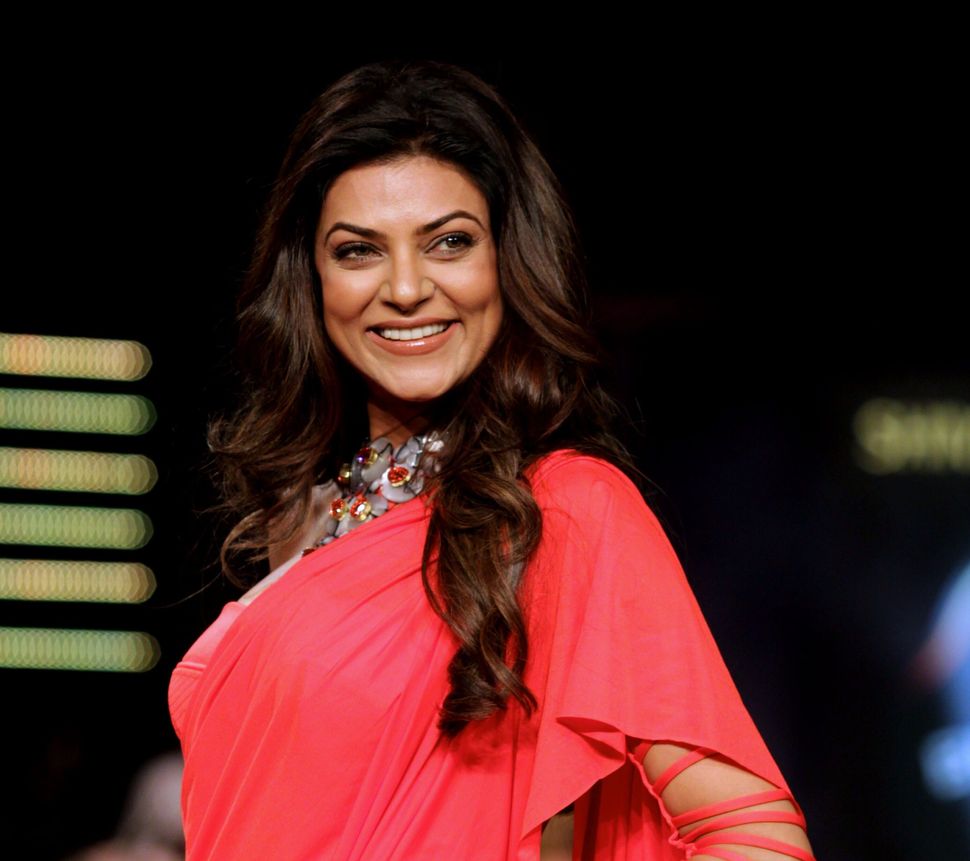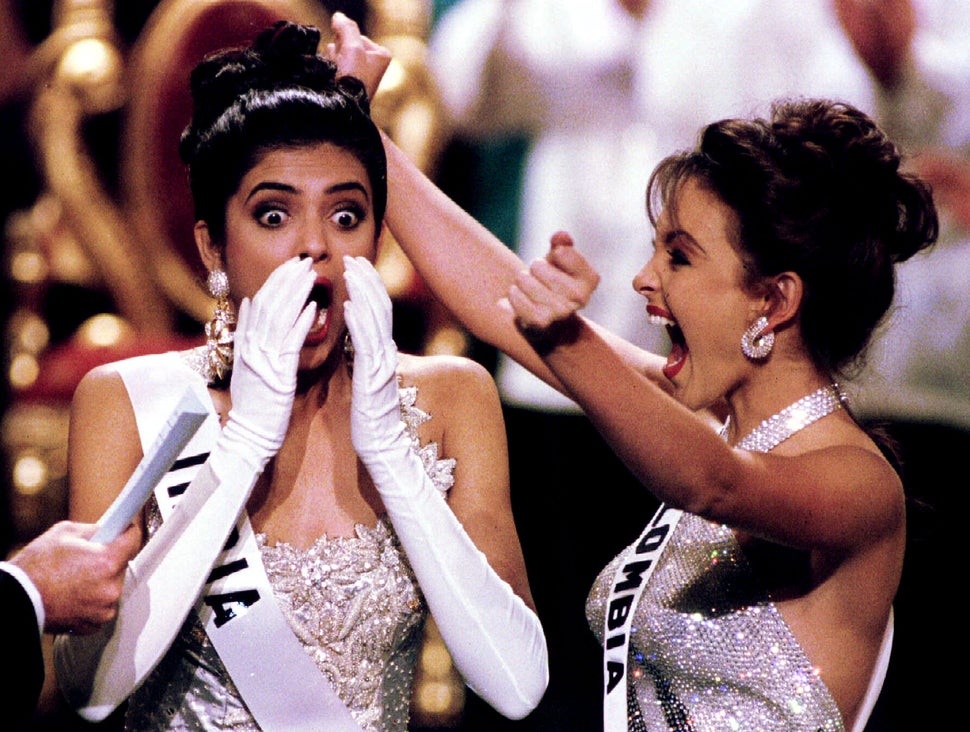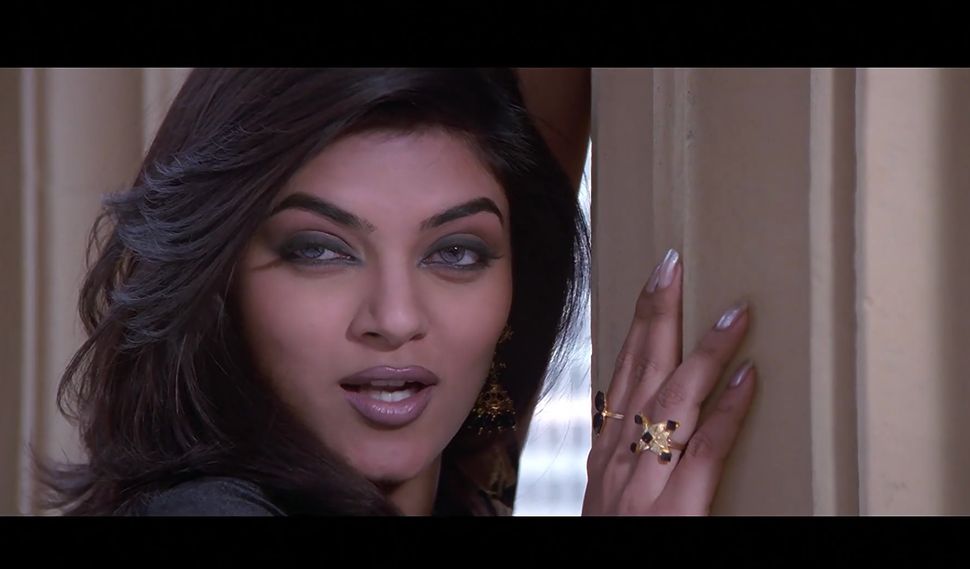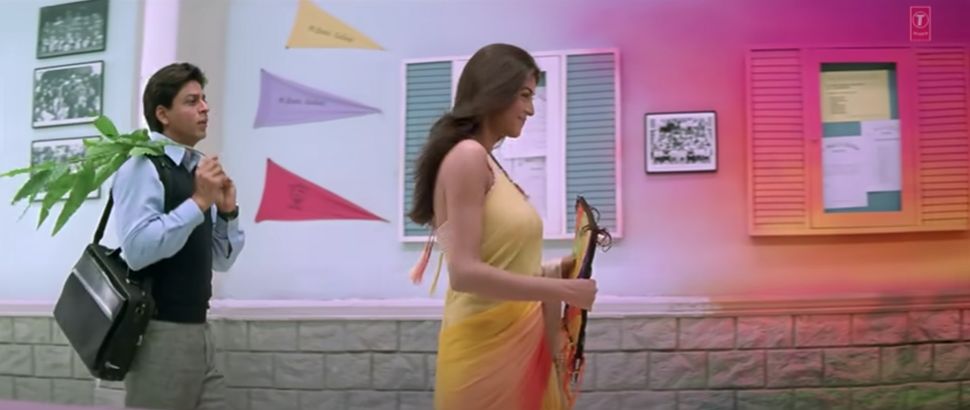
CONTAINS SPOILERS FROM AARYA
The three women in my family, and dadai (my grandfather) were gathered in front of the 14” black-and-white TV, perched at a far corner of our bed. This was May 1994, a school night, and here we were glued to the television like we’d usually be to watch Shah Rukh Khan or Madhuri Dixit dance on a New Year’s eve special programme. Earlier that day, dadai had heard on the Bengali evening news that an Indian girl had made it to the finals of a “big fashion competition”.
It was the final stretch of the Miss Universe competition, held at Manila that year, and we watched as 18-year-old Sushmita Sen, tall and graceful in a shimmering gown, repeatedly touched her forehead and then her chest quickly, like we kids were instructed to do at Puja pandals and temples.
“Meyeta Bangali naki? Khali khali pronaam korche (Is the girl Bengali, she is constantly doing pranaam’)?” wondered my maternal grandmother, squatting on the floor with a pile of vegetables to be chopped. It was a redundant stereotype — my paternal grandfather was Bengali and Christian — but her guess was right. That night, Sen, a Bengali born in Hyderabad, became the first Indian woman to be crowned Miss Universe.
Over 25 years later, it may seem strange to begin an article on Sen with her beauty pageant win —a cultural phenomenon now associated with promoting body dysmorphia, beauty stereotypes and promoting exploitation of women. But Sen’s pageant win charged through the patriarchy of many middle-class Bengali homes in unexpected and wonderful ways.
It was also the beginning of her life—both public and private—unfurling as a challenge to every misplaced moral belief fed to young girls like us. Sen’s Miss Universe win — and the image of a confident, articulate woman in a swimsuit, or gowns with deep necklines, or figure-hugging dresses, sashaying down the ramp — put a huge question mark on how we were schooled to treat our bodies even as children, as things that should be painstakingly hidden and covered up.
The next few years, often during ‘fancy dress’ competitions in my school, alongside ‘Indira Gandhi’, ‘Netaji Subhas Chandra Bose’ and ‘Florence Nightingale’ — personalities we knew from our textbooks — there’d be a little ‘Sushmita Sen’, traipsing across our school’s hallroom in a long dress, and doing the shocked gasp that had become Sen’s pageant trademark.
As the hallroom erupted in cheers, little Sushmita would say two lines about how she wanted to care for the poor, a spin-off from Sen’s Miss Universe speech where she said she wanted to do something for children if she won.

Several of my women friends who grew up in privileged, middle-class Kolkata families remember how their parents and relatives’ fascination with Sen also led to a somewhat half-hearted acceptance of the freedoms she represented. There was still resistance, of course, and some amount of body shaming — people would grumble that it was “okay to walk around in those clothes if you are Sushmita Sen”—but that did not stop her from being a deeply desirable prototype for the freedoms we craved for in our own lives.
Sen’s filmography, on the other hand, consisted of more commercial misses than hits. Her biggest commercial success — Farah Khan’s Main Hoon Na — was a film with an ensemble cast, which predictably revolved around Shah Rukh Khan, the male lead. While most women actors of her time were presented with at least one ‘author-backed’ role, Sen mostly got left out. Movies where she played the protagonist —Kalpana Lajmi’s Chingaari and Tanuja Chandra’s Zindaggi Rocks—sank at the box office.
“Several of my women friends who grew up in privileged, middle-class Kolkata families remember how their parents and relatives’ fascination with Sen also led to a somewhat half-hearted acceptance of the freedoms she represented.”
But now, if you rewatch Biwi No. 1, the 1999 blockbuster that was her only other big hit, Sen’s character — the self-assured ‘other woman’ who towers over the hero — you almost feel relieved that Rupali did not end up with the character essayed by Salman Khan. Khan plays a philandering husband who cheats on his wife played by Karisma Kapoor, but also trivialises and degrades Rupali. In want of a better term, it would seem very un-Sen-like.
It was not Sen who changed, in at least how she conducts her public life —she’s still the outspoken woman she always was, displaying casual unconcern for ‘log kya kahenge’. But the lens we see her through evolved. Sen’s life has transformed from being framed by the media and family elders as a cautionary tale for young girls to a primer on how to stand up to patriarchy for women like us.
“She lived unapologetically—most people don’t have the guts to live like this. In a society like ours, she was ahead of the curve, and didn’t believe in picking up characters whose ultimate goal was to get married,” director and choreographer Farah Khan told HuffPost India’s entertainment editor Ankur Pathak.
That’s why Sen’s reappearance on screen as the titular protagonist of Ram Madhvani’s web series Aarya feels like the 44-year-old finally getting her due.The 10-part series almost feeds off an old stereotype attributed to her — that she is a ‘strong’ woman—that was rather rooted in her physicality.
“Her height, body language and overall assertiveness narrowed her choices, to begin with. There weren’t too many heroes who could match up... there still aren’t,” said writer Shobhaa De, who was the editor of magazines such as Stardust and Society.
Madhvani’s Aarya played to exactly those strengths of Sen, which had no place in the Bollywood she tried to make it big in as a 20-something.
‘Eats men like air’
When Bohni Bandyopadhyay, a film journalist, first read Sylvia Plath’s Lady Lazarus as a young literature student from a small town on the outskirts of Kolkata, the final lines “Out of the ash/I rise with my red hair /And I eat men like air” immediately reminded her of Sen. She couldn’t understand why, until many years later, she dwelled on Sen’s screen presence as a journalist.
“She eats up the men on screen,” she told me, realising that, as a teenager, she had made a fairly visual connection between Sen’s on-screen persona and Plath’s assertion in the poem.
It’s an idea echoed by other industry watchers.
“She couldn’t be a simpering damsel in distress and the Indian audience, especially men at that time, wasn’t ready for that personality,” said Sudeshna Roy, a filmmaker and a senior journalist who was the editor of popular Bengali magazine Sananda when Sen was rising in the ranks of Bollywood.
Choreographer Ganesh Hegde who worked with Sen on the blockbuster song Mehboob Mere in Khalid Mohamed’s Fiza, concurred. “She could swallow up the screen all by herself,” Hegde said.
At that time, the economic power to choose what film to watch in theatres rested more with men and Sen’s inability to appear as a woman who needed saving did not speak to the fairly primal desire to see a man as the on-screen protector. “The OTT platforms will allow her to exploit her talent to her full potential which the films of the time, that preferred docile heroines waiting to be rescued, couldn’t,” Khan told HuffPost India.
Which is why Madhvani’s characterisation of Aarya, right down to her physicality, feels like someone Sen deserved to play long, long ago.

The Dutch series Penoza, the inspiration for Aarya, opens with a scene which shows the lead character swimming. Aarya’s writers wanted a similar beginning, which makes it clear how physically strong the character is.
Aarya opens with a svelte Sen hanging upside down on gymnastic rings, before slowly lowering herself down to the ground. It’s effective, Sen’s symmetry is powerful and it sets the audience’s expectations for her character. Through the course of the show, Sen is shown again on the same rings, hanging upside down, crying and shouting after the death of her sister — the scene subtly capturing the character’s struggle to claim power back over her life.
“Sushmita is a strong woman. Her character in real life, her presence, her aura all reflect that. Aarya does not follow the traditional indoctrination of story-telling and traditional arcs, that is, a weak woman who becomes strong. Instead, Aarya is a strong woman from the very beginning, except — and this was the brief that my co-writer and co-director Sandeep, Vinod and I gave to Sushmita — except when it comes to her children,” said Madhvani.
Madhvani explained that he is inspired by the ‘New Journalism’ of the 70s, the likes of writers Tom Wolfe or Hunter S. Thompson. “It was called Faction. Fiction and Fact. So I now combine the elements of theatre, documentary-ness, and fiction to get to a process of truth, that works with the actor and the character both,” Madhvani said, explaining that Sushmita’s own personality was also considered extensively while scripting Aarya. So instead of having her swim (like the protagonist in Penoza), Sen is shown on gym rings which she works out on in real life.
Aarya stands out because it makes good use of those parts of Sen’s personality which seemingly came in the way of her becoming a commercial success through the 90s and early 2000s.
Khan, who worked with Sen in Main Hoon Naa, told HuffPost India’s entertainment editor Ankur Pathak that Sen’s body language held up the character of Aarya.
“When I saw her in Aarya, I called her. I thought I’ll call after watching the entire series but I had to call her midway, just to tell her how she shoulders the show through sheer force of personality,” Khan recalled.
Filmmaker Tanuja Chandra, who directed Sen in Zindaggi Rocks (2006), said that once she finished the script, Sen was the first person who came to her mind for the lead role. Though the film sank at the box office and was panned by critics, Zindaggi Rocks was among the handful of films which had Sen in substantial roles. In the movie, Sen plays Kria, a ‘rock star’ and single mom, who falls in love with a quiet doctor played by Shiney Ahuja. Her son is diagnosed with a rare disease, which leads her to take some desperate measures. Zindaggi Rocks was Kria’s journey, entirely her story.
“She (Sen) has an interesting combination of grit and emotional richness in her screen persona. This is what I needed for the role of Kria, who is tough but also loves intensely, almost to a fault,” Chandra told HuffPost India.
The ‘other woman’
Throughout her acting career, Sen was often relegated to playing the ‘supporting actress’ character in a slew of films. These characters were written as a foil to the female lead — usually a docile woman who ticked the boxes of the ‘traditional Indian woman’ with somewhat conservative values. Sen’s character had a prototype — the fierce ‘other’ woman who had a flourishing career but nursed a deep loneliness, which was then filled by the male lead. But the hero eventually chooses his ‘true love’ — a simpler, more orthodox girl — over Sen’s boss woman. It’s a pattern that was cemented by films like David Dhawan’s Biwi No. 1 and Boney Kapoor productions’ Sirf Tum, which released within a month of each other in 1999.
Agathiyan, who wrote and directed Sirf Tum, told HuffPost India that he wanted to draw a sharp contrast between the woman who desires his male lead Deepak (played by Sanjay Kapoor) and the ultimate love of his life. “I wanted a ‘good’ woman, but a sexy woman. Sushmita Sen fit the role perfectly. She was sexy and a career woman, she looked the part,” Agathiyan said.
““I wanted a ‘good’ woman, but a sexy woman. Sushmita Sen fit the role perfectly. She was sexy and a career woman, she looked the part,”
Apart from these two films, Sen has played somewhat similar characters in many other movies. In Bas Itna Sa Khwaab Hai, Sen plays Lara Oberoi, the CEO of the company where Abhishek Bachchan works. She falls for him, though his heart lies with the simple, small-town Rani Mukerji. In Tumko Na Bhool Payenge, Salman Khan’s character Veer chooses a coy village girl Muskaan, whereas the urban, modern Mehak played by Sen, dies. In Maine Pyaar Kyun Kiya, Sen does ‘get’ the guy, as the cliche goes, but only after Salman Khan runs after Katrina Kaif, who finally ditches him and asks him to go to Naina (a nurse played by Sen to Khan’s doctor). In Bewafaa, Sen is the deceased elder sister whose memory hangs heavy on the relationship between younger sister Kareena, who is married to her former brother-in-law played by Anil Kapoor.
Besides her personality, which filmmaker and former journalist Roy described as “fierce”, another reason for Sen’s relegation to supporting roles was also India’s skin colour bias at the time.
Some of this spilled over to the number of brand endorsements Sen was offered at that time, despite having an engaging screen presence.
Sumanto Chattopadhyay, who worked as the creative director of Ogilvy for several years and is now the chairman of marketing company 82.5 told HuffPost India that brands usually approached agencies after having decided their ambassador and several representatives of popular beauty brands often insisted on signing up Sen’s peer Aishwarya Rai, another former beauty pageant winner.

“In India, there was much debate about who was more beautiful. While Sush had won the bigger title and had her fans, Ash was the one who was considered the epitome of beauty – she was light skinned, blue-eyed, with ‘perfect’ features – and she was demure to boot; all in all, the package Indians love. Today, there is much debate about colourism and condemnation of brands that rely on it, but the Indian mindset is somewhat fixed in its tastes and biases.
“While Sush got her share of endorsements – with her intelligence and personality being praised – Ash was far more in demand as a model and brand ambassador, especially for beauty brands,” Chattopadhyay explained. He said he’d meet several brand executives from international brands who’d insist on drawing a comparison between Sen and Rai, concluding light-skinned Rai was a better choice as the face of their brand.
The ones that stand out
Often, only a woman’s directorial gaze managed to shake up Sen’s image in a Bollywood film. In Meghna Gulzar’s Filhaal (2002), Sen plays Sia, again a ‘career woman’ whose decision to choose work over marriage constantly agonises everyone, including her partner played by Palash Sen. His dogged, sacrificial devotion seems to be presented as a more empathetic alternative to Sen’s pursuit of her career.
However, Gulzar lets Sen say her piece, and when she does talk about her career, she is met with mild confusion, not deep anger. Sia keeps working throughout her pregnancy (she is a surrogate to her best friend Reva’s baby) and often lashes out at the unreasonable sanctions placed by Reva (played by Tabu, no less) on her life. Gulzar treats both Reva’s anxiety and Sia’s impatience with empathy. The career woman trope, thankfully, doesn’t get reduced to a mere stereotype in Filhaal.
The other woman who embraced Sen’s personality in a commercial venture was Farah Khan. Though the film revolves around Shah Rukh Khan, the few scenes he has with Chandni (played by Sen) serve to bring him down a few notches from being an alpha Army major out on a dangerous mission.
Unlike most other directors, Khan didn’t downplay what Shobhaa De called the most attractive part of Sen’s personality: her “attitude”.

“Back then, I totally believe that people were intimidated by her, heroes were a bit taken aback. She’s fierce. Which is why, before Main Hoon Na went on floors, I told Shah Rukh, look, she’s going to look taller to you, there’s no hiding that, and her character is spunky, independent and confident,” Khan told HuffPost India’s Pathak.
In complete contrast to his villain-punching personality, Major Ram is like a bungling, infatuated teenager around Chandni, in absolute awe of her.
“When I saw the film’s first cut, I thought I had short-changed her. You won’t believe it, but if you see, her screen time is very limited. Her dubbing was over within one-and-a-half hours and she had not more than 8-10 lines. I told her that I feel bad about it. She simply laughed it off because that’s how she is: very chill and unaffected by things like screen time, which other actors would create havoc around,” Khan said.

Though Main Hoon Na did not have much of Sen, Khan did not reduce her to a stick figure. Sen owned her small role and was part of the memorable Tumhe Jo Maine Dekha song. Through the course of the song, a gorgeous Sen has fun, revelling in her own sensuality — something Farah Khan has been great at bringing out in heroines.
Sen on song
It’s not just that—Sen had a way of making the lyrics of the many blockbuster songs she appeared in very… Sen. These include Chunari Chunari (Biwi No. 1), Dilbar Dilbar (Sirf Tum) and Mehboob Mere (Fiza) and Prem Rog (Maine Pyaar Kyun Kiya), of course, Tumhe Jo Maine Dekha. She is in charge, she is pursuing the man and she is having fun while doing it.
Unlike the dulcet tones usually assigned to the heroine, Sen’s biggest hits were mostly sung by full-throated singers such as Sunidhi Chauhan, Hema Sardesai and Anuradha Sriram.
My favourite bit about watching the addictive Main Kudi Anjaani Hoon (Zor, 1998) was Sen displaying mock, eye-rolling shyness to accompany the lines, ‘dekhe na koi mera sharmaana (nobody sees me blushing’). Often, watching it felt like an inside joke between Sen and I, like she was saying, ‘who cares about sharmaana, man!’
Towards the end of the song, Sen charges at the male background dancers circling her in a mock threat, dispersing them, then dusting her arms in mock ‘male’ machismo. The lines playing in the background goes, ’yahaan pe bhawre, wahan pe bhawre, kahan hai mera woh parwana?” It’s almost like Sen’s character is mocking the need for a ‘parwana’ at all.
Though the film Zor, starring Sunny Deol as the male lead, disintegrates into frightening gender stereotypes and involves romance-washing of physical violence a la Kabir Singh, the song seems like a separate universe in itself.
Ganesh Hegde, who first met Sen while choreographing an act for her for a Filmfare Awards function in 1996-97, reiterated that Sen’s expressions in most songs signalled she was in control instead of pining for the man’s attention. Hegde remembers Sen emoting to a couple of fairly saccharine lines in Mehboob Mere — ‘main teri dulhan ban ne ko, nikli hoon saj dhaj ke ghar se (I’ve decked up and left home to become your bride)’ — in a way most female actors of her time weren’t schooled to. “Those lines are supposed to be coy. But her expressions were seductive, but dominating, as if she is telling the man, ‘tu kya leke jayega mujhe, main leke jaati hoon tujhe’ (where will you take me, I’ll take you where I want to),” he said.
“She dominated the screen. I knew that from the first time I choreographed her for a stage performance, and unlike what we did with most actors, we let her dance alone on the stage to Sting’s Desert Rose. It’s a gamble on a massive stage like that, but I knew Sushmita could hold the stage down all by herself,” Hegde said. It’s a template he followed while choreographing the song in Fiza (2000) as well. In a fair majority of sequences, Sen was alone on the screen and the background dancers either absent, or very far behind. This wasn’t quite the usual pattern reserved for ‘item numbers’.
“But then, there is nothing usual about her. A lot of the dancing, especially the belly dancing moves, she did herself. There’s a trance-like feel to her dancing and in those sequences, I did not do anything. It was mostly her,” Hegde said.
Sen could never look like a sultry, shy ‘nourisher’ or a ‘nurturer’ for a man in a song, Hegde said, adding she was always extremely particular about how she projected herself.
“In course of shooting Mehboob Mere, Sen refused to dance to or lip sync to some of its original lyrics.”
In course of shooting Mehboob Mere, Sen refused to dance to or lip sync to some of its original lyrics. “There was a line that went ‘aa garmi le mere seene se (come feel the heat of my bosom)’ and she refused to sing it. She said, ‘I won’t just do it’,” Hegde said. Composer Anu Malik had to then change the lines to ‘aa narmi le mere aankhon se (bask in the softness of my eyes)’.
“It was unheard of at that point of time, to command and extract that kind of respect,” Hegde said.
Intimidating, or just self-assured?
A part of Sen’s stereotyping as the ‘other woman’ in films, explained a film journalist who did not want to be named, stemmed from lurid tabloid stories which feasted on the candour with which Sen conducted her relationships. She made no attempt to keep her relationships under wraps, but would not make crowd-pleasing marriage announcements. In a particularly stunning interview with Simi Garewal in 1997, where she appeared with her then partner Vikram Bhatt, Sen is asked if men find her intimidating. “I think some of them do, I am not sure why?” laughs the 22-year-old.
As Garewal goes on to grill the couple about their relationship, Bhatt is reticent, but Sen doesn’t hold back.
“I have a clean conscience,” she says, explaining that she did not believe in redundant social sanctions. “I am going out with this man. He is in a divorce, but I am not the kind of person who will hide this part of my life till his divorce is finalised and then claim I am seeing him. I won’t do that,” Sen said.
When I was growing up in Kolkata, popular media coverage of Sen toggled between an unasked-for deification of her status as a young single mother and a deep discomfort of her freedom as a normal, sexual being.
As teenage girls inhabiting deeply gendered spaces—middle-class homes, schools, tuition classes—which were all echo chambers for a similar restrictive morality, Sen and the reports on her life fascinated and confused us.
“Sushmita Sen was entirely unapologetic about her life—boyfriends included. She was upfront and in your face—this never sits well with the media. Sushmita always had attitude, which was her most attractive feature, according to me. But which also antagonised several industry-watchers, who preferred the fake coyness projected by her contemporaries. She owned her sexuality, her daughters became a part of a larger narrative gradually,” said Shobhaa De.
That part of her impressed Khan as well. “Most people don’t have the guts to live like this. In a society like ours, she was ahead of the curve who didn’t believe in picking up characters whose ultimate goal was to get married,” Khan said.
As a teenager, I have spent hours parsing through articles salaciously titled, ’Sushmitar Jibone Abar Nuton Purush (There’s A New Man Again In Sushmita’s Life?”), accepting their half-shocked, half-titillating tones as natural while discussing a woman’s sexual freedom. It took years, reading feminist literature and interacting with unapologetic women (and at least a couple of boyfriends) to unlearn these lessons.
Though filmmaker Roy protested that Sen was ever censured, especially in the Bengali media, evidence of it is all over the place even now. In an article in the highest selling Bengali daily Anandabazaar Patrika, a writer begins her recent piece on Sen by saying that the famously private actor had agreed to an interview on the condition that there would be no questions about her personal life or marriage. The writer, however, blithely goes on to say that watching Sen’s partner Rohman Shawl lounging on a sofa behind her ‘compelled’ her to ask a question about marriage.
She writes that she started by asking Sen, “You haven’t married…”. To which Sen said, “Haven’t married yet.”
The piece goes on to speculate, “The way she stressed on the word ‘yet’, feels like we will see her as a bride this year itself, that’s the rumour in the industry as well.”
Not satisfied with Sen’s answer, the journalist goes on to grill her, “Why haven’t you married yet? Are you scared of commitment, having a family?”
Sen, however, has an answer for her: “I have not been pregnant. Does that mean I am scared of children?”
National media coverage of Sen wasn’t much better either, with even coverage of her professional life slipping into a dissection of the personal. An anchor on Zoom TV, while covering a story on Sen refusing to promote a film with former partner Randeep Hooda, loudly suggested that Sen must have enjoyed filming the intimate scenes in the movie, but wanted to wash her hands off them following their break-up.
Through all this muck aimed at her, Sen remained herself, confident and sure of her worth.
A director who worked with her told me on condition of anonymity that he had written a dreadful line for her to speak in a film.
“There, the woman wants to prove her chastity to the man she loves and says, ‘if you don’t believe me, take me to a doctor and get me checked if I am a virgin’.”
This was the ’90s, said the director, when these binaries were prevalent in popular Indian films and most actors wouldn’t bother protesting. However, Sen, whom he otherwise described as hardworking and obedient, approached him saying, “Sir, this line is ridiculously laughable. I can’t believe it and I can’t say it and my audience won’t believe it either. They’d have a good laugh at my expense. Please change it.”
The director, though taken aback, promptly changed the line.
The non-starry ‘star’
Many directors who have worked with Sen speak of her “kindness” and willingness to go out of her way to make others comfortable.
“I had never met anyone like her either before her, or after making that film with her. While most actors and actresses constantly wanted the director to shuttle around them, Sushmita was just the opposite,” recalled Sirf Tum director Agathiyan.
Though Agathiyan had roped in a ‘Miss Universe’ to play a sort of brazen, hot, modern contrast to his orthodox, quiet heroine, he was taken aback by Sen’s kindness. And he let that seep into Sen’s character, though the broad framework remained the same.
Sirf Tum has aged pretty badly, with its absurd notions about chastity and womanhood, but it’s hard to miss the hint of kindness in Sen’s otherwise cut-and-dry character of a ‘career woman’ who wants to give up everything after she falls for a simple man with ‘high values’. While most stars of her time, Agathiyan said, expected the director to rehearse with them no matter how busy he was, Sen would make no such demands. “One day she walked in and saw me mounting the camera. I came running to her, thinking she’d want me to sit with her. However, she said, ‘sir, please carry on with your work, I’ll do my rehearsals myself’,” Agathiyan said.
Srijit Mukherji, who cast Sen in his Bengali film Nirbaak, told HuffPost India that she did the film for free.
“Her parents really wanted her to do a Bengali film, and she liked the experimental script of the film. I told her I don’t have even a small fraction of the money she commands, and she said did not want any,” Mukherji said.
While shooting the film, in which Sen plays a woman who connects the love stories of four men, she often stayed back to watch others work.
“She had a very small part in the first half of the film which was about Anjan Dutt (a popular Bengali composer, singer and actor). After she finished her bit, she would sit with me and watch Anjan da perform, like a keen student,” Mukerji said.
In the last leg of the film, Sen played a corpse, with whom a man played by Bengali actor Ritwick Chakraborty had fallen in love.
Physically, the shoot was very difficult for Sen, Mukherji said. “She is a corpse, so there were long hours where she had to lie without batting an eyelid, without breathing visibly, while Ritwick was around saying his line and shooting around her,” Mukherji recalled. Sen pulled through without complaining. She’d also stay back to watch Ritwick shoot his parts.
The director wanted to shoot a short scene at Mondarmoni, a seaside Bengal town where middle-class Bengalis often go for honeymoons. He thought Sen would insist on a set in Kolkata, but she readily agreed to make the five-hour journey for a small scene that revolved around Ritwick.
“She was still playing a corpse and Ritwick was moving her around, so her body language had to not slip, she worked extra hard to make it perfect,” Mukherji said.
Once during the shooting of the remake of Astitva, that Mahesh Manjrekar was making in Bengali and English, Sudeshna Roy had accompanied Sen for a month to help her work on the character.
“In the last shot, she was wearing a long, wavy wig like Bengali women often wear their hair. Suddenly, her hair caught in the fan whirring nearby and yanked the wig off. Sushmita fell on her back, hard,” Roy recollected.
The actor immediately got up and as the terrified crew waited to be scolded, she simply smiled and said, “Thank god the wig was there, isn’t it?”
For the latest news and more, follow HuffPost India on Twitter, Facebook, and subscribe to our newsletter.